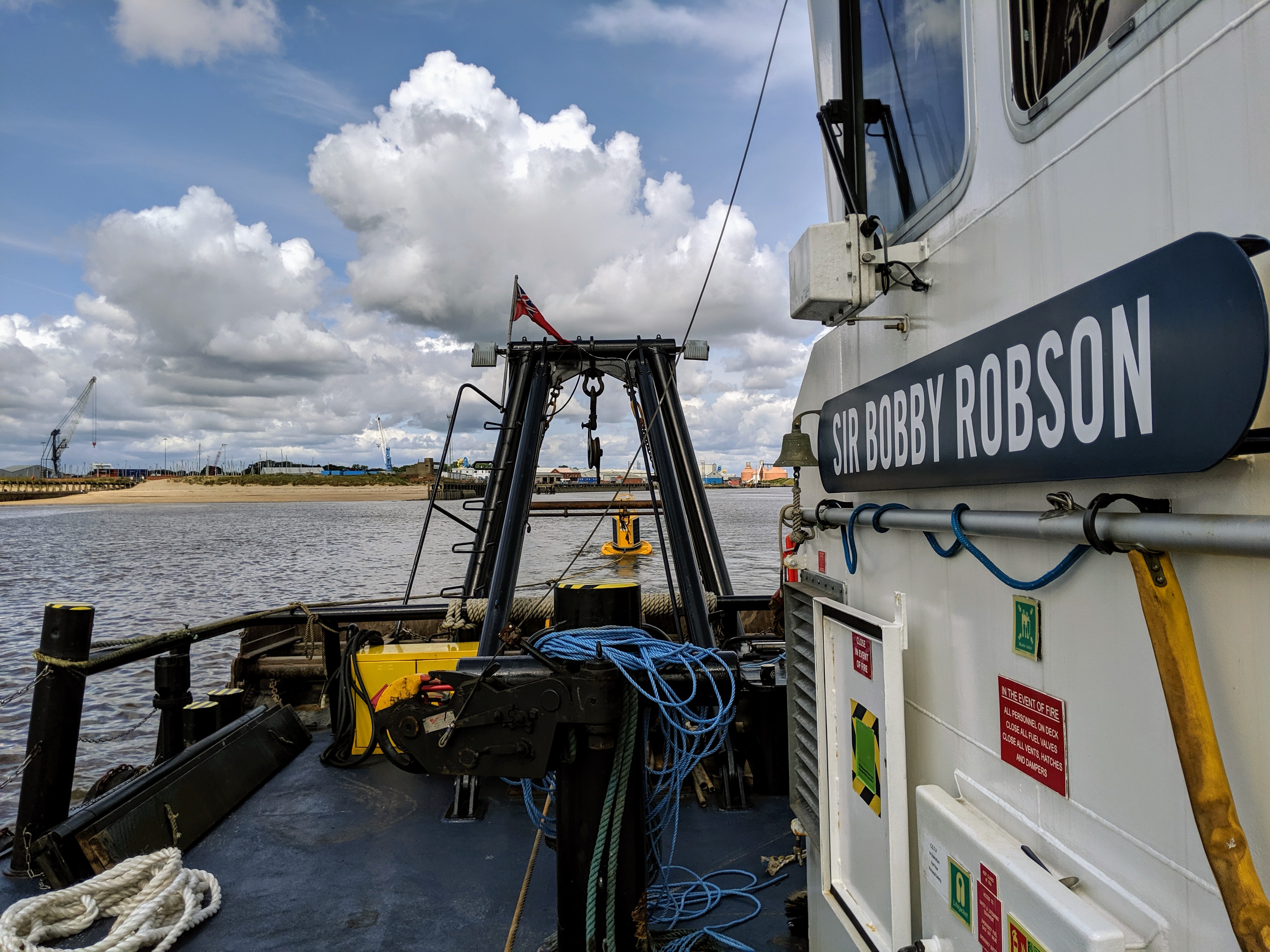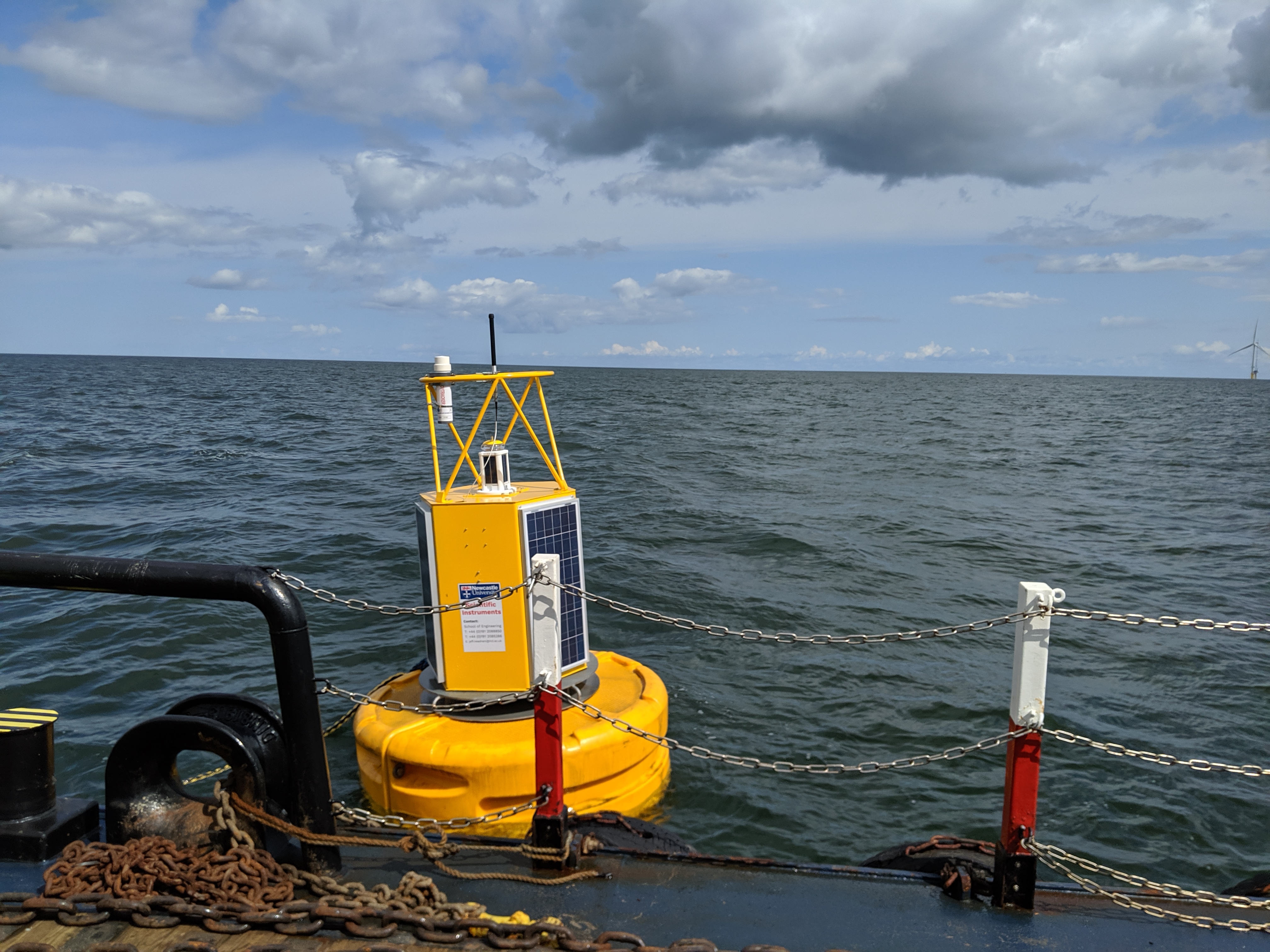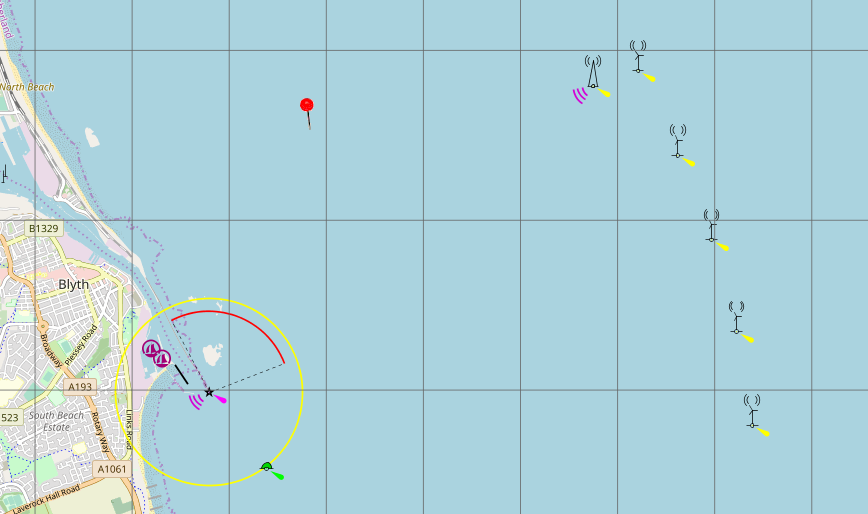About A Buoy
Six months ago, on a cheerful day in August 2019, we deployed our Mobilis DB 2000 databuoy off the coast of Blyth. Named ANGY (Acoustic Network Gateway buoY) and operated remotely from SEA Lab, the buoy provides a hub for our underwater acoustic communications network with two NM3 modems suspended beneath the buoy. The addition of two hydrophones and a wifi link back to shore provides a high quality audio stream to support acoustic communications experiments in the sea, as well as recordings of local wildlife such as the visiting bottle nose dolphins.
 Databuoy At Sea
Databuoy At Sea
There have been a great many lessons learned over the course of the deployment and ongoing maintenance, as well as the rich stream of data for the scientific experiments. And there is still much to be learned as we journey out to carry out inspections and repairs in the coming months.
 Towing the Buoy behind the Sir Bobby Robson
Towing the Buoy behind the Sir Bobby Robson
The databuoy forms the key gateway for the test bed on the EPSRC-funded USMART project. Experiments over the coming months will demonstrate the effectiveness of large scale, long-term, low-cost and low-power sensor networks. The NM3 modem developed at Newcastle University SEA Lab provides the acoustic communications link. Network protocols developed at University of York will ensure reliable retrieval of sensor data in a challenging communications environment whilst maintaining the low-power requirements of the network. Compressive sensing techniques and algorithms as well as specialised sensing applications are being developed by the team at Heriot-Watt University.
 The Buoy Alongside The Sir Bobby Robson
The Buoy Alongside The Sir Bobby Robson
The databuoy was deployed in location with a range of about 2.5km to the shore station.
 OpenSeaMap Location of Databuoy
OpenSeaMap Location of Databuoy
The hydrophones and high quality audio stream were also occasionally routed to a YouTube live stream. This is a somewhat energy hungry process so over the winter months with minimal solar energy to charge the batteries this stream hasn’t been running as often. However, with sightings of dolphins in the area by the local North East Cetacean Project, we hope to be able to run the live stream for short durations when dolphins have been sighted in the area. Previous recordings of activity are also available on the youtube channel as well as any ongoing live stream. See https://www.youtube.com/angy-sealab for the channel. An example of dolphin activity is present in one such recording.
 ANGY YouTube Stream Spectrogram Of A Boat Passing
ANGY YouTube Stream Spectrogram Of A Boat Passing
There are now a few sensor nodes in the sea around the databuoy that have been happily reporting back using the NM3 acoustic modems. It’s useful to note that the infrequent low-power transmissions and noise-like waveforms mean the acoustic emissions of the modems fall far below that of local boat traffic in amplitude and duration.
As the days get longer, and the battery starts to charge once more, there should be plenty more data and recordings to analyse over the coming months.